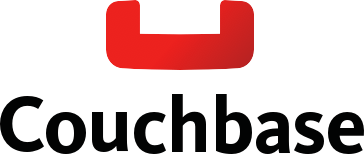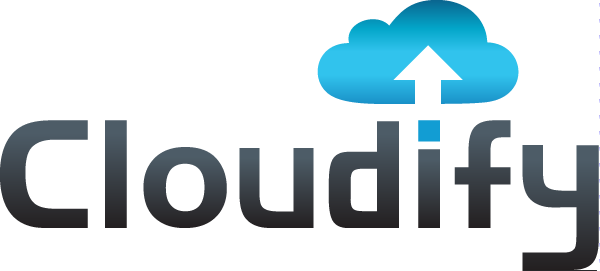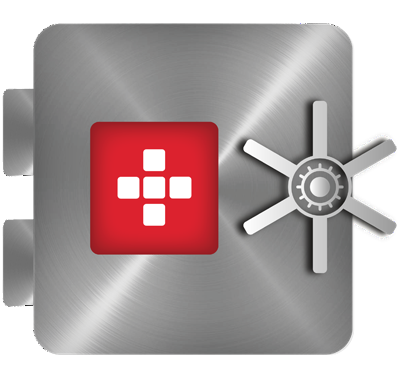Ziniki Network


If you need to refresh the page on your app or reload the data in your database, then you are not looking at the truth. As the world relies on data to make decisions, the compounding effect of these layers of out-of-date or inconsistent data can cause harm. Reactive Data actively keeps all copies of the data up-to-date in near real-time.

The world of Big Data tends to admire beautiful data analysis and visualizations as if they were museum pieces. Most data dashboards take a “look, but don’t touch” approach. Reactive Data must always support read AND write, so the user or the system can affect changes in the moment, triggering updates up and down the chain.

Traditional data analysis systems can help you make better decisions, but are not usually wired to take actions on your behalf. Similar to how a smart thermostat uses sensor data to keep you comfortable all by itself, Reactive Data must incorporate transactional systems, so that data-driven insights can drive actions and behaviors.

Monitor changes in NoSQL, Relational, and Big Data sources and propagate them bi-directionally.

Capture user actions and device activities as it happens via Webhooks and JavaScript beacons.

Intercept application data access and persistence calls through a REST API layer to capture the latest changes.

Consume streaming data from external sources and turn them into easy-to-use and enriched composites.
Current Big Data analytics solutions can efficiently process a large volume of data in parallel. While this is good for forming macro-scale insights, those insights are not immediately useful until the derived data is migrated to user-facing applications.
With Reactive Data, any insights gained can be immediately pushed to the apps and the connected users.
While “there is an app” for almost everything, most of them only do a few things well. To accomplish most real world actions, it is up to end users to act as the go-between these app silos and bring it all together.
Reactive Data can orchestrate the flow of information behind multiple apps that correlates to the actions that end users would have performed.
Nowadays, users are inundated with alerts, notifications, and various requests. Many of these alerts have little or no informational value and do not facilitate the activities users need to perform.
Reactive Data can identify opportunities to trigger personalized messages that offer targeted ways for users to engage, participate, or transact.

Can read and write to any database (NoSQL or RDBMS) using existing drivers. Connects to external data sources using REST APIs or WebSockets.

Implements a Functional Reactive Programming (FRP) language to decompose complex processing models into a series of simpler steps.

Breaks the silos of stream processing, cube aggregation, batch analysis by chaining calculations or algorithms under an FRP-based dependency graph.
This demo shows how six years worth of Major League Baseball at bat appearances and win/loss records are streamed into Ziggrid, where a series of increasingly complex analysis is chained together to form a Sabermetrics model. We have slowed down the processing to show how the data propagates through the graph.
In the screencast below, Dr. Gareth Powell, Chief Scientist of Ziniki Network, will step through the various analysis performed and show how the results are continuously pushed to the HTML5-based data visualization dashboard, built using Ember.js, D3.js, and WebSockets.
“NoETL: Processing Data in Real-Time Using Incremental MapReduce”
Presented at Couchbase [SF] 2013 in San Francisco, CA.
Ziggrid instances can join a Reactive Data Network (RDN), where changes in one Ziggrid node will automatically propagate to another node that subscribes to that change feed.
This communication is transmitted using our ZINC Protocol (Ziniki Inter-Node Communications Protocol), which uses WebSockets with JSON encodings to inform subscribing Ziggrid nodes, as well as web or mobile applications. ZINC is a bi-directional protocol that can work alongside existing REST-based APIs.

We are working on a simple messaging system that gives human users read/write access to data flowing through the Reactive Data Network.
Ziggram facilitates Reactive Workflows that can span multiple disparate applications and provides an overlay that enables users to share data, edit data, and act on data. This overlay enforces granular security when data is shared between users and beyond organization and domain boundaries. Ziggram messages are traceable, auditable, and preserves lineage.
With Ziggram, different slices of data and application functionalities are brought together in message threads that represents mashups of data, content, and social interactions, elevating the quality of work performed and decisions made.

We have open sourced the core language specifications of Ziggrid, so that we can work with broad spectrum of data scientists to define the language features and standard functions that can be used to describe data relationships and calculation in a functional reactive way. We build the first version Ziggrid on top of an open source NoSQL data store called Couchbase, and are in the process of porting Ziggrid engine to run on top of the in-memory processing capabilities of Apache Spark.
The world’s first cooperative SaaS platform. We are working on a new way to build reusable Reactive User Experiences that work across a variety of devices and operating systems by adopting the “card” metaphor and supporting it with a few key runtime capabilities via JavaScript. We plan to consolidate a few existing open source projects, including Oasis.js for card sandboxing, Conductor.js for card contracts, and Glazier for card assembly and user security, to create an easy-to-use developer experience for “card” development.

We love the Ember.js community and believe that Ember will become the “go-to” front-end JavaScript framework for ambitious web applications when the dust settles. Ziniki has contributed to the architectural design of the Ember Data library to give it the right semantics to support streaming change sets from the cloud.

We use Couchbase Service as both a transactional (OLTP) and analytics (OLAP) data store. Couchbase is scalable, document-oriented NoSQL engine that provides the foundational persistence and data processing layer for the Ziggrid engine.

We want to allow a Ziggrid cluster to horizontally scale out as data processing volume fluctuates in the Reactive Data Network. Cloudify allows us to develop run-time “recipes” that monitor the usage patterns of the virtual servers on Amazon Web Services or OpenStack environment in real-time, and allow to us to “react” to spikes in data traffic by bringing up (or down) additional nodes for Ziggrid cluster or the underlying data store cluster.

OCIM provides Switzerland's Most Trusted End-to-End Digital Services for small businesses. We believe that competent IT services, cybersecurity, and data protection are not just for large companies, but should be a right for all companies. OCIM’s end-to-end digital management solutions, ensure that their clients are fully supported and can adjust to changing technical needs. OCIM has the flexibility to evolve and tailor any technical solution to always keep their clients digitally secure now and well into the future.

THEDATASAFE (TDS) is the global solution for securing digitalization of data. Located in Switzerland, TDS hosts and secures your data in a 'Zero Knowledge' environment with servers hosted in the best Tier III or Tier IV data centers certified ISO 27001 ONLY in Switzerland. This allows TDS clients to benefit from Swiss Data Protection Laws (nFADP), as well as the quality, confidentiality and seriousness of Swiss know-how.
We are experts in bridging the gap between the science of composing data and the art of engaging users. We know that companies have invested in Big Data and have gained useful insights that have driven better decisions.
We are working with clients to move beyond just insights and ask the question: Now what?
Now that we have smart data dashboards, what can we do get users to look at them?
Now that we have integrated all the data, what new apps or workflows could we build?
Now that we know what users are doing, what ways do we have to get them to do more?
There is life after Big Data. We can guide your path.
Helped a large education publisher to design an open ecosystems-based course building and delivery platform, using data to react to student needs.
Watch a presentation on EdSense
Working with a UK-based gaming firm to envision the future of mobile betting using personalized offers, such as real-time buybacks.
See our one-pager on Reactive Betting
Strategizing with large call center operator to improve customer self-service by providing live data syncing between agent and customer web apps.
Strategic discussions with a D.C. based firm and the DoD on a new way to continually assess force readiness and quantify operational performance.
Strategic discussions with a large hospital to push patient data with personal care checklists directly to the providers’ devices throughout the visit.
Working with a D.C.-based systems integrator to optimize an agency’s upstream data collection, so that the data can be acted on, edited and traced.
Thank you! Your submission has been received!
Oops! Something went wrong while submitting the form :(



